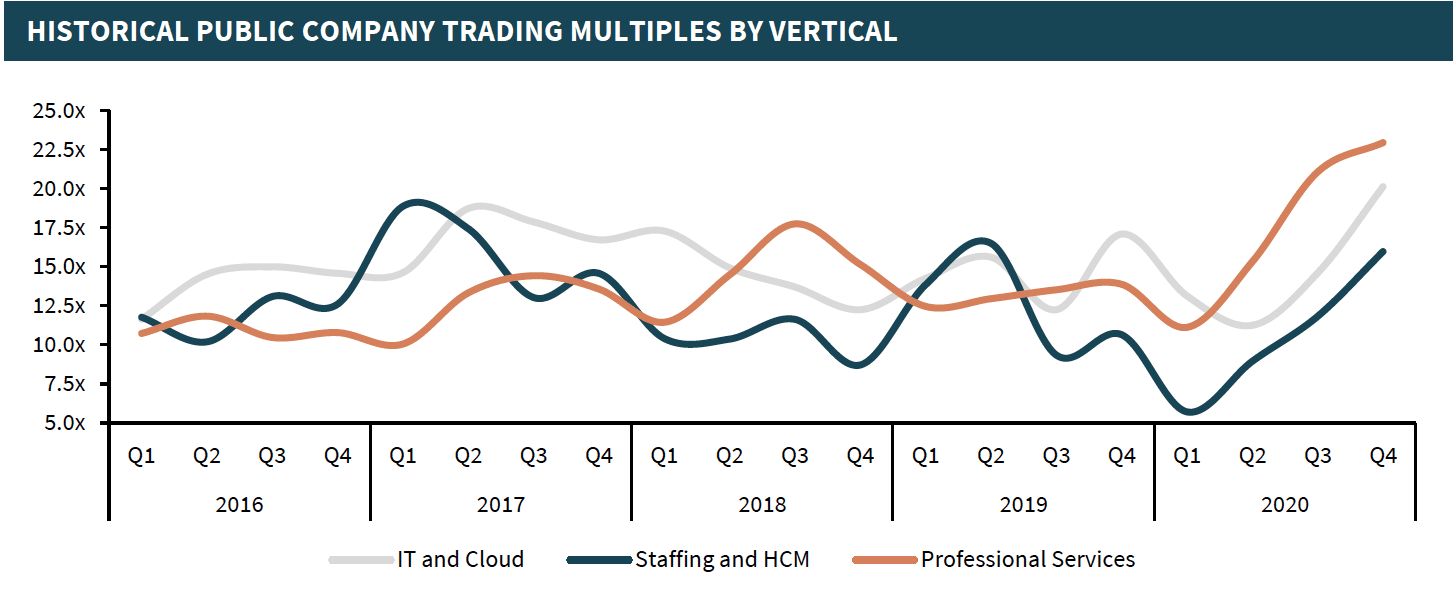Introduction
Welcome to the world of trading, where fortunes are made and lost in the blink of an eye. Whether you’re a seasoned investor or just dipping your toes into the financial markets, you’ve probably come across the term “P&L.” Short for “Profit and Loss,” P&L is a crucial metric that measures the financial performance of a trading endeavor.
Understanding P&L is fundamental to successful trading as it provides insights into the profitability, risk, and efficiency of your trades. It is the ultimate gauge of whether your trading strategy is yielding profits or resulting in losses.
In this article, we will delve into the concept of P&L in trading, its calculation, and its significance in shaping trading strategies and risk management.
Whether you’re a beginner keen to grasp the basics or a seasoned trader looking to refine your strategies, this article will equip you with the essential knowledge to navigate the complex world of P&L in trading.
Definition of P&L in Trading
Profit and Loss, commonly referred to as P&L, is a financial metric used to measure the financial performance of a trading activity. It provides a clear snapshot of the gains and losses generated from trading positions within a specific timeframe.
P&L is calculated by subtracting the total costs incurred from the total revenue generated. In trading, revenue refers to the profits gained from successful trades, while costs include expenses such as transaction fees, commissions, and any losses incurred.
P&L is not only a measure of the absolute profitability of trades but also an indicator of the overall performance and effectiveness of a trading strategy. By tracking P&L, traders can assess the success of their trading activities and make informed decisions to adjust their strategies accordingly.
It is important to note that P&L can be positive or negative. A positive P&L indicates that the trading activity has generated profits, while a negative P&L signifies losses incurred. The magnitude of the P&L provides insight into the extent of gains or losses.
P&L can be calculated for different time periods, ranging from short-term intraday trading to long-term investments. Traders often analyze P&L over various time intervals to gain a comprehensive view of performance, identifying trends and patterns that can aid in decision-making.
Now that we have a clear understanding of the definition and calculation of P&L, let’s explore its importance in the world of trading and how it influences trading strategies and risk management.
Calculation of P&L
The calculation of P&L in trading involves determining the difference between the total revenue generated and the total costs incurred. Let’s take a closer look at the key components of this calculation:
Revenue: This refers to the profits gained from successful trades. Revenue is calculated by multiplying the number of shares or contracts traded by the difference between the buying price and the selling price. For example, if you buy 100 shares of a stock at $50 each and later sell them at $60 each, your revenue would be $1,000 (100 shares x ($60 – $50)).
Costs: Costs include various expenses associated with trading, such as transaction fees, commissions, and potential losses. Transaction fees and commissions are charges imposed by brokers for executing trades. They can be fixed amounts or a percentage of the trade value. Losses, on the other hand, occur when a trade results in a negative return. These costs are deducted from the revenue to calculate the net P&L.
Net P&L: The net P&L is simply the difference between the revenue and costs. It reflects the overall profitability of the trading activity during a specific time period. If the net P&L is positive, it indicates that the trades have generated profits. Conversely, a negative net P&L signifies losses incurred.
To illustrate this calculation, let’s consider an example. Imagine you bought 200 shares of a stock at $20 each and sold them at $25 each. Additionally, you incurred $20 in transaction fees. The total revenue would be $1,000 (200 shares x ($25 – $20)), and the total costs would be $20. Therefore, the net P&L for this trade would be $980 ($1,000 – $20).
It is worth noting that the calculation of P&L can become more complex when there are multiple trades within a specific time period or when options or futures contracts are involved. In such cases, the P&L for each individual trade needs to be calculated, and the net P&L is determined by summing up the P&L from all trades.
Understanding the calculation of P&L is essential for traders to keep track of their profits and losses accurately. By monitoring the P&L, investors can evaluate their trading strategies, identify strengths and weaknesses, and make informed decisions to optimize their trading performance.
Importance of P&L in Trading
P&L is a vital metric in trading and holds significant importance for traders of all levels. Here are several reasons why P&L is crucial in the world of trading:
Evaluation of Trading Strategy: P&L allows traders to assess the effectiveness of their trading strategies and make data-driven decisions. By tracking the P&L, traders can identify which strategies are profitable and which ones are generating losses. This enables them to refine and optimize their approaches to maximize profitability.
Performance Measurement: P&L serves as a performance measurement tool, providing traders with an objective view of their trading activities. Positive P&L indicates successful trades and profitable outcomes, while negative P&L indicates losses. Monitoring P&L over time helps traders gauge their overall trading performance and make adjustments accordingly.
Risk Assessment: P&L is closely tied to risk management. It helps traders assess the risk-reward ratio of their positions. By comparing the potential profits (revenue) with the potential losses (costs), traders can determine if a trade is worth taking. Analyzing the P&L can assist in making informed decisions about position sizing, stop-loss levels, and risk tolerance.
Decision-making Tool: P&L provides traders with valuable information for decision-making. By analyzing the P&L of past trades, traders can identify patterns, trends, and strategies that consistently yield positive results. This knowledge can guide future trading decisions, enabling traders to capitalize on profitable opportunities and avoid repeating past mistakes.
Accountability and Accountability: P&L holds traders accountable for their trading decisions. It provides a clear record of performance and allows for self-assessment. Traders can track their progress over time, identify areas for improvement, and take responsibility for their trading outcomes.
Investor Confidence: P&L plays a key role in gaining the trust and confidence of investors and stakeholders. Positive P&L demonstrates a trader’s ability to generate profits and manage risk effectively, making them more attractive to potential investors. It is also a crucial metric for traders seeking capital allocation or investment opportunities.
Understanding the importance of P&L empowers traders to prioritize performance analysis, risk management, and strategic decision-making. By leveraging the insights gained from P&L, traders can enhance their overall trading success and achieve their financial goals.
Components of P&L
Calculating P&L involves considering various components that contribute to overall trading performance. Let’s explore the key components of P&L:
Revenue: Revenue represents the profits generated from successful trades. It is obtained by calculating the difference between the selling price and the buying price, multiplied by the number of shares or contracts traded. This component reflects the gains generated from favorable market movements.
Costs: Costs encompass various expenses associated with executing trades. These include transaction fees, brokerage commissions, and any other charges incurred during the trading process. Costs are subtracted from the revenue to determine the net P&L.
Net P&L: Net P&L is the outcome of deducting costs from the revenue. It provides a holistic view of the profitability or loss generated from trading activities. A positive net P&L reflects profit, while a negative net P&L indicates a loss.
Open P&L: Open P&L represents the unrealized profits or losses of open positions. These positions have not been closed yet, and the gains or losses have not been actualized. Open P&L fluctuates as market prices change, and it is included in the overall P&L calculation.
Closed P&L: Closed P&L refers to the realized profits or losses from closed positions. Once a trade is closed or a position is liquidated, the gains or losses become realized, contributing to the overall P&L. Closed P&L provides a clear measure of the success or failure of individual trades or strategies.
Expenses: Apart from direct trade-related costs (transaction fees, commissions), expenses can include overhead costs such as research subscriptions, trading software, and data fees. While these expenses may not be directly deducted from the revenue, they impact the overall profitability and should be considered when analyzing the P&L.
Dividends and Interest: Dividends received from stock holdings and interest earned from cash balances or margin accounts can also be components of P&L. Dividend income can contribute positively to P&L, while interest expenses might negatively impact it.
Tax Considerations: Tax obligations associated with trading profits or losses should be taken into account when analyzing P&L. Taxes can significantly impact the net P&L, reducing overall returns on investments.
By understanding the components of P&L, traders can dig deeper into their financial performance, assess the profitability of their trading activities, and make informed decisions to optimize their future trading strategies.
Impact of P&L on Trading Strategies
P&L plays a crucial role in shaping trading strategies and influencing decision-making. Here are some key ways in which P&L impacts trading strategies:
Strategy Evaluation: P&L provides traders with a tangible measure of the profitability and effectiveness of their trading strategies. By analyzing the P&L associated with specific strategies, traders can assess which ones are generating consistent profits and which ones are not. This evaluation helps traders refine and optimize their trading strategies to focus on those that yield positive P&L outcomes.
Risk Management: P&L has a direct impact on risk management. Traders need to consider their risk tolerance and be mindful of the potential losses associated with their trading strategies. By monitoring P&L, traders can assess the risk-reward ratio of their trades and make informed decisions about position sizing, setting stop-loss levels, or diversifying their portfolios. A positive P&L indicates effective risk management, while a negative P&L highlights potential areas for improvement.
Adaptability and Flexibility: P&L provides real-time feedback on the success or failure of trading strategies. Traders who closely monitor their P&L can quickly adapt and adjust their strategies based on changing market conditions. Whether it’s scaling up profitable strategies or cutting losses on unsuccessful ones, traders use P&L as a guide to maintain flexibility and adaptability in their trading approach.
Entry and Exit Signals: P&L can serve as a helpful indicator for entry and exit signals in trading. Positive P&L can validate the effectiveness of an entry point, signaling that it may be a good time to enter a new position. Conversely, negative P&L may signify that it’s time to exit a trade or re-evaluate the strategy. By incorporating P&L analysis into their trading decisions, traders can enhance their timing and improve their overall trade outcomes.
Psychological Impact: The psychological impact of P&L on traders is profound. Positive P&L contributes to feelings of confidence and success, boosting trader morale. On the other hand, negative P&L can lead to emotional stress, self-doubt, and potentially hinder decision-making capabilities. It is essential for traders to manage their emotions and maintain discipline, even during challenging times when P&L may be negative.
Long-Term Analysis: P&L provides valuable data for long-term analysis and performance tracking. By analyzing historical P&L trends, traders can identify patterns, assess the impact of market conditions, and refine their strategies over time. This long-term analysis helps traders gain a deeper understanding of their trading performance and make informed decisions based on solid historical data.
Incorporating P&L analysis into trading strategies enables traders to continuously evaluate and adapt their approaches based on real-time financial performance. By leveraging P&L insights, traders can enhance their decision-making, optimize risk management, and increase their chances of long-term trading success.
P&L and Risk Management
P&L and risk management go hand in hand, as understanding and effectively managing risk is essential for sustainable trading success. Here are key ways in which P&L impacts risk management:
Risk Identification: P&L analysis helps traders identify and assess the various risks associated with their trading activities. By monitoring P&L, traders can pinpoint potential sources of risk, such as volatile market conditions, excessive position sizes, or high-risk trading strategies. Identifying these risks enables traders to take proactive measures to mitigate them, protecting their portfolios from significant losses.
Risk-Reward Ratio: P&L analysis allows traders to evaluate the risk-reward ratio of their trades. By comparing the potential rewards (revenue) to the potential losses (costs), traders can determine if a trade is worth pursuing. A positive risk-reward ratio indicates that the potential profit outweighs the potential loss, making the trade more favorable. Traders can adjust their position sizes or entry/exit points to maximize the risk-reward ratio and improve overall risk management.
Position Sizing: P&L analysis plays a vital role in determining appropriate position sizes. Traders should consider their risk tolerance and the potential impact of a trade on their overall P&L. By assessing the potential P&L outcomes of different position sizes, traders can allocate their capital in a way that balances risk and reward effectively. Smaller position sizes can reduce the impact of potential losses, while larger positions can enhance potential profits.
Stop-Loss Orders: P&L analysis can help traders set appropriate stop-loss orders. These orders automatically trigger the sale of a security or the closing of a trade when the price reaches a predetermined level. By evaluating P&L potential, traders can identify suitable stop-loss levels that limit their downside risk. Stop-loss orders act as a safeguard, allowing traders to protect their positions and prevent significant losses in volatile or adverse market conditions.
Portfolio Diversification: P&L analysis guides traders in diversifying their portfolios to manage risk effectively. By monitoring P&L across various assets or trading strategies, traders can identify correlations and dependencies. Diversifying the portfolio across different asset classes or uncorrelated trading strategies can help mitigate risk and reduce the impact of losses during market downturns. P&L analysis provides the necessary insights to construct a well-balanced and diversified portfolio.
Emotional Management: Effectively managing emotions is crucial for risk management. P&L analysis can help traders maintain discipline and make rational decisions, even during periods of financial strain. By focusing on P&L and the objective data it provides, traders can reduce emotional biases and avoid making impulsive or irrational trades that can negatively impact their risk management strategies.
P&L analysis is an integral part of risk management in trading. By analyzing and utilizing P&L insights effectively, traders can identify and mitigate potential risks, optimize position sizing, set appropriate stop-loss levels, diversify their portfolios, and manage their emotions. This proactive approach to risk management contributes to long-term trading success and capital preservation.
Factors Affecting P&L in Trading
Multiple factors can impact the P&L of trading activities. Traders need to be aware of these factors, as they influence the profitability and overall financial performance. Here are several key factors that can affect P&L in trading:
Market Conditions: Market conditions, including volatility, liquidity, and overall trend, can significantly impact P&L. In highly volatile markets, sudden price movements can generate substantial gains or losses. Stable market conditions, on the other hand, may result in smaller, more predictable P&L outcomes. Understanding market dynamics and adapting trading strategies accordingly is crucial for generating positive P&L.
Risk Appetite and Risk Management: Individual risk appetite and the effectiveness of risk management strategies influence P&L outcomes. Traders with higher risk tolerance may take on riskier positions, which can result in larger potential gains or losses. Effective risk management, such as setting appropriate stop-loss levels and diversifying the portfolio, helps mitigate losses and protect P&L from excessive risk exposure.
Trading Strategy and Methodology: The chosen trading strategy and methodology play a significant role in P&L outcomes. Different trading styles, such as day trading, swing trading, or long-term investing, have varying risk-reward profiles and potential P&L implications. The efficacy of the strategy, including entry and exit points, position sizing, and trade execution, directly affects the profitability of trades and overall P&L.
Execution Costs and Fees: Transaction costs, including commissions, spreads, and other fees charged by brokers or market makers, impact P&L directly. Higher costs reduce profitability, especially for traders who execute a high volume of trades. Minimizing execution costs through careful selection of brokers or negotiating favorable fee structures is essential for achieving optimal P&L outcomes.
Trade Timing and Execution: The timing and execution of trades can significantly influence P&L. Market timing is crucial, as entering or exiting trades at the right moments can result in improved P&L outcomes. Efficient trade execution, avoiding slippage or delays, ensures that traders capture the desired price levels, reducing potential P&L discrepancies.
Trading Discipline and Emotional Management: Psychological factors, such as discipline and emotional control, affect P&L. Succumbing to fear, greed, or impulsive behavior can lead to suboptimal trading decisions that negatively impact P&L outcomes. Maintaining discipline, following a well-defined trading plan, and managing emotions effectively contribute to generating consistent and positive P&L.
News and Market Events: News releases, economic data, and other market events can swiftly impact P&L. Significant market-moving news, such as earnings reports, economic indicators, or geopolitical events, can cause price fluctuations and affect trading positions. Traders need to stay informed, adapt to changing market conditions, and manage their positions accordingly to minimize potential losses and maximize P&L opportunities.
Capital Allocation and Leverage: The amount of capital allocated to trading activities and the use of leverage affect P&L outcomes. Higher capital allocation allows for larger position sizes and potentially higher profits or losses. Utilizing leverage amplifies the impact of market movements, increasing both potential gains and losses. Proper capital allocation and prudent use of leverage are crucial to managing risk and optimizing P&L.
Understanding and considering these factors can help traders make informed decisions, optimize their trading strategies, and enhance their P&L outcomes. Traders should continuously assess how these factors impact their trading activities and adapt their approaches accordingly to achieve sustainable profitability.
P&L and Emotional Management
Emotional management is a critical aspect of successful trading. The P&L of trading activities can have a profound impact on traders’ emotions and decision-making processes. Here are key ways in which P&L is intertwined with emotional management:
Psychological Impact: P&L outcomes can evoke a range of emotions in traders, including euphoria after profitable trades or distress following losses. These emotional responses can cloud judgment and lead to impulsive decision-making. It is important for traders to recognize and manage these emotions effectively to make rational decisions based on thorough analysis rather than impulsive reactions.
Discipline and Patience: P&L analysis helps traders maintain discipline and patience in their trading approach. It allows traders to objectively assess their trading performance and focus on long-term profitability rather than short-term fluctuations in P&L. By relying on a well-defined trading plan and sticking to predetermined strategies, traders can minimize the impact of emotional biases on their decision-making.
Overcoming Fear and Greed: P&L outcomes can trigger fear or greed in traders, leading them to make irrational decisions. Fear can cause traders to exit positions prematurely or avoid potentially profitable opportunities. Greed, on the other hand, can result in taking excessive risks or staying in trades longer than necessary. By maintaining a balanced perspective and focusing on consistent profitability rather than short-term gains, traders can overcome these detrimental emotions and make more sound trading decisions.
Stress Management: Trading can be a stressful endeavor, particularly when P&L outcomes are uncertain or negative. Emotional management is crucial for mitigating stress and maintaining mental well-being. Traders should develop stress management techniques, such as regular exercise, meditation, or journaling, to reduce stress levels and make objective decisions based on a clear state of mind.
Learning from Mistakes: P&L analysis helps traders treat losses as learning opportunities rather than personal failures. Traders can review their trading decisions and P&L outcomes to identify areas for improvement and adjust their strategies accordingly. This mindset shift from dwelling on losses to embracing them as opportunities for growth can help traders develop resilience and emotional strength in the face of adversity.
Goal-Oriented Perspective: Embracing a goal-oriented perspective helps traders focus on the bigger picture rather than becoming fixated on short-term P&L fluctuations. By setting realistic goals and tracking progress over time, traders can maintain motivation and resilience, even during periods of temporary setbacks. This shift in mindset allows traders to make decisions based on long-term profitability rather than being consumed by the emotional roller coaster of day-to-day P&L fluctuations.
Seeking Support: Emotional management in trading can be challenging, and traders may benefit from seeking support from fellow traders, mentors, or support groups. Engaging in discussions, sharing experiences, and seeking guidance from others who have overcome similar challenges can be valuable in managing emotions and maintaining a healthy mindset in the face of P&L fluctuations.
By recognizing the impact of P&L on emotions and implementing techniques to manage emotional responses, traders can make more rational decisions, maintain discipline, and navigate the ups and downs of trading with resilience and focus.
Conclusion
P&L, or Profit and Loss, is a fundamental concept in the world of trading. It serves as a key metric for assessing the financial performance of trading activities. By understanding and leveraging P&L, traders can make informed decisions, refine their strategies, and optimize their trading outcomes.
We explored various aspects of P&L, including its definition, calculation, and components. P&L provides insights into the revenue generated from profitable trades as well as the costs incurred, such as transaction fees and losses. Traders can calculate their net P&L by subtracting the costs from the revenue, which serves as a measure of their overall trading success.
We also discussed the importance of P&L in trading. P&L plays a crucial role in evaluating trading strategies, measuring performance, and managing risk. By analyzing P&L, traders can identify profitable strategies, assess risk-reward ratios, and make data-driven decisions. P&L is also an accountability tool, helping traders take responsibility for their trading outcomes and gain the confidence of investors and stakeholders.
Furthermore, we explored the impact of P&L on trading strategies, risk management, emotional management, and decision-making. Traders need to consider factors such as market conditions, strategy efficacy, execution costs, and emotional control when analyzing and managing P&L. Emotion plays a significant role in trading, and maintaining discipline, managing stress, and learning from mistakes are crucial for long-term success.
In conclusion, P&L is a powerful tool that provides traders with vital insights into their financial performance. By understanding the components of P&L, considering market factors, managing risk effectively, and maintaining emotional stability, traders can navigate the dynamic landscape of trading and increase the likelihood of achieving their financial goals.

























